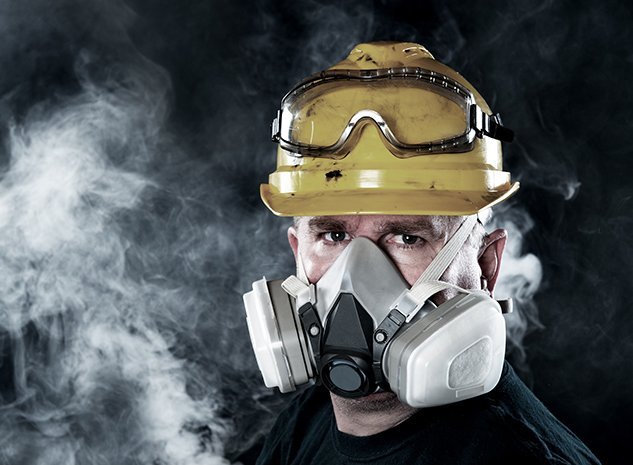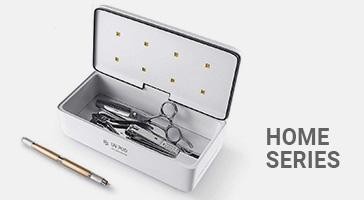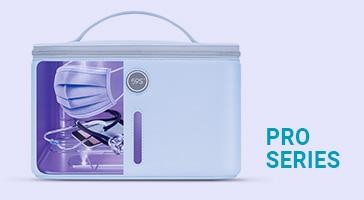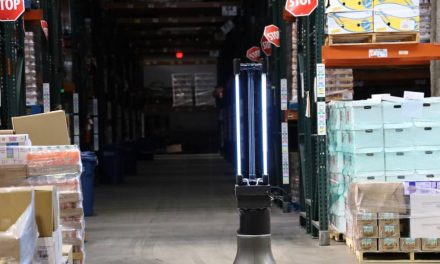Table of content
- Is it worth it to invest in an air purifier for your home?
- How to improve indoor air quality with plants?
- What are some general tips for improving air quality in your home?
Listen to the article
How can you improve air quality in your home?
While air pollution is often thought of as an outdoor problem, it can also be a major issue in our homes. In this article, we will explore some simple ways to improve the air quality in your home and make your indoor environment healthier.
Though it is often out of mind, indoor air pollution is a serious issue. In the developed world, we spend about 90% of our time indoors, yet most people do not think about the air quality they are breathing. There are many ways to improve the air quality in your home, and this post will explore some simple solutions.
The air pollution in your home can be worse than outdoor air pollution because you have more control over the indoor environment. You can improve air quality in your home by making some simple changes, like using an air purifier, opening windows, and avoiding certain products.
Though we spend most of our time indoors, indoor air quality is not something that is commonly talked about. The average American spends 87% of their life indoors. This number will only increase as the world becomes more and more urbanized. Given this statistic, it’s important to be aware of the simple ways how you can improve air quality in your home.
Don’t worry, though! You can do some simple things to improve your indoor air quality immediately. By taking a few preventative steps and educating yourself on the basics of indoor air quality, you can make your home a healthier place to live.
Is it worth it to invest in an air purifier for your home?
An air purifier is a device that removes pollutants and other particles from the surrounding air. This can be beneficial for people with allergies or asthma, as it can help to improve air quality in the home. Air purifiers often include LED displays that flash green when the surrounding air is clean.
There are a few basic ways to improve air quality in your home. One is to find an air purifier with a high CADR or Clean Air Delivery Rate. This measures the amount of purified air an air purifier can produce in a minute. You should also invest in an air purifier with a fan for circulating clean air around the entire room; this will help improve the overall air quality in your home.
Though an air purifier is an investment, it can be worth it to improve the air quality in your home. The size of the unit and the price are important factors to consider when purchasing an air purifier. Additionally, you should place the unit in an area where it will have maximum effect. For bigger rooms, you may need more than one unit; however, smaller and cheaper units can still be effective if you move them around regularly.
Air purifiers are a great way to improve the air quality in your home, especially if you suffer from allergies. Pet dander and pollen can be difficult to get rid of, but an air purifier can help reduce the levels of particulate matter in the air. This can make it easier for people with allergies to breathe and keep their symptoms under control.
Though air purifiers are not a cure-all for improving air quality, they can be helpful in certain circumstances. Filters inside the purifier remove small particles from the air by trapping them inside the filter. This is different from traditional filtration methods, which use chemicals to remove particles. Air purifiers can be helpful in areas where there is a lot of dust or smoke or if someone in the home suffers from allergies or asthma.

How often should you air out your home to improve air quality?
There is no one-size-fits-all answer to this question, as the frequency with which you should air out your home depends on various factors. However, some general tips include:
- Open windows and doors whenever possible to allow fresh air to circulate.
- Vacuum and dust regularly reduce the number of particles in the air.
- Use fans to move air around your home.
- Remove carpets if possible, as they can trap dust and other allergens.
- Consider investing in an air purifier.
How to improve indoor air quality with plants?
There are many ways to improve indoor air quality, but using plants is one of the simplest and most popular methods. House plants can help remove harmful chemicals from the air, but there is no evidence to show how reliable they are. It is important to avoid over-watering plants as it may lead to mold growth, affecting allergies.
In addition to this, indoor plants can also increase oxygen levels in your home. By filtering out pollutants from inside your home- including those from furniture, carpets, trash, and even natural gas- indoor plants can help improve the air quality in your space.
Filti is a company specializing in indoor filtration technology. They offer a variety of products that can improve your indoor air quality by removing harmful particles and allergens from the air. Some of their products include air purifiers, humidifiers, and dehumidifiers.
Are there any natural air fresheners that can improve air quality?
Yes, indoor air quality can be improved with natural air fresheners. Many people choose to replace synthetic chemicals with natural oils and vinegar to improve their indoor air quality. You can also clean your air using baking soda and lemon juice. However, it’s important to note that some cleaning products contain harmful chemicals. So be sure to avoid them when possible.
Additionally, Moms should avoid plants that contain volatile organic compounds (VOCs). VOCs can cause headaches, irritation, and other health problems. Fortunately, not all plants contribute to poor indoor air quality. Quite a few plants help improve air quality!
What are some green cleaning products that can improve air quality?
You can use eco-friendly cleaning products to clean your home. These are usually plant-based or mineral-based and don’t contain any harsh chemicals. However, they may not be as effective as chemical sprays.
You should avoid using toxic ingredients in your cleaning products, like bleach or ammonia. These can cause respiratory problems and other health issues.
Plants help improve indoor air quality by trapping dust, cleaning the air, and removing grease. They are great at removing bacteria and preventing cross-contamination.
Chemical sprays are usually a better option than eco-friendly plant products because they don’t go into the air and can get down further into your lungs.
What are some general tips for improving air quality in your home?
There are several general tips you can follow to improve the air quality in your home. Some simple things include using a bathroom and kitchen fan to circulate air, keeping baseboards or heating vents clear of furniture, and avoiding using harsh chemicals or cleaners.
Many general tips can be followed to improve air quality in your home. One way is to install an HVAC system with filtration built into the ductwork. This will help to clean the air as it circulates throughout your home. Additionally, Dr. Mann suggests opening windows or using a fan to improve air quality and circulate fresh air throughout your living space.
To keep the indoor environment clean and healthy, ventilation is key. Make sure to open windows and use fans regularly. Avoid smoking indoors, using harsh chemicals like bleach, and keeping pets indoors.
Change your AC filter
One of the simplest things you can do to improve air quality in your home is to change your AC filter. A low-quality air filter will require more frequent replacement, so keeping replacements on hand is important. Air filters should be replaced every 30 days or when you have a larger capacity filter. Keeping your appliances in good working order will help improve the air quality in your home. Filters should be replaced regularly, and cleaners and clothes dryers should be inspected for clogs or other issues. To improve air quality in your home, start with the smallest room. If you have a pet, make sure they are not contributing to poor indoor air quality. Consider investing in a HEPA filter for your furnace and AC unit to remove most allergens from the air.
Don’t forget about other air filters
The AC filter isn’t the only thing that helps keep air quality high in your home. Air purifiers and air cleaners can help clear less serious pollutants.
Regularly inspecting filters in appliances like your vacuum, clothes dryer, and kitchen ventilation system can also help maintain good air quality.
Check for the recommended filter replacement interval with these products – it’s important to keep your home as healthy as possible!
Check your air ducts
It’s important to keep your home air quality in check, and one way to do that is by checking your air ducts. Make sure the vents are working properly, and the filter is clean. If you have any concerns, be sure to address them with a professional. Poorly installed or maintained air ducts can lead to contamination, so it’s important to take care of this aspect of your home. Additionally, molds can accumulate in air ducts and contribute to an unhealthy environment – so it’s crucial to keep them clean!
Use cooking vents
Cleaning the vents and filters regularly is important for people cooking on gas ranges – particulates from gas stoves account for almost half of outdoor particle levels.
Cooking methods like frying emit more particles than others, boiling can also increase humidity levels, and gas stoves produce gases and ultrafine particles. Using your range hood can decrease pollutants by more than 80%.
Cooking on the back burner and using the range hood, preferably on a high setting, will help lower humidity and reduce particles by more than 80% compared to slower speeds.
Keep your rugs and carpets clean
Rugs and carpets are a common source of dust, dirt, and other allergens. The best way to reduce the amount of these pollutants in your home is to keep them clean. This can be done by vacuuming regularly with a HEPA filter-equipped vacuum cleaner and using a brush attachment to get into all the nooks and crannies. You should also mop hardwood, tile, and vinyl floors regularly to prevent allergens from building upon them. If you have pets, try to keep your house “shoe-free” as much as possible – this will help reduce the amount of pet dander and particles on your carpets. Finally, if you have carpets, clean them often with a high-quality vacuum cleaner – using a brush attachment if necessary. Dust particles build up over time, so the best way to prevent them from becoming an issue is to stay ahead of the problem!
Control humidity in your home
There are many ways to improve your home’s existing environment, such as sealing doors and windows. Sealing doors and windows can help maintain the desired humidity and temperature levels in a home. A humidifier or dehumidifier should be used in winter and summer to maintain indoor humidity. A properly sealed home will have lower concentrations of pollutants inside and less mold and mildew. Warmer environments can cause mold and bacteria growth. Wet weather can also contribute to air quality issues by increasing humidity levels. Continue to monitor the air quality around your home for signs of mold or bacteria build-up.
Buy indoor plants to freshen the air
Houseplants have minimal impact on the air quality of a home. To significantly improve your home’s air quality, you need 10-1000 houseplants per square meter of floor space.
Nasa’s Clean Air Study found that peace lilies, ferns, and Devil’s ivy are good at removing chemicals from the air.
Professor Stephen Holgate from the British Lung Foundation does not personally endorse any of these plants for this purpose, but they’re a great option in general.








